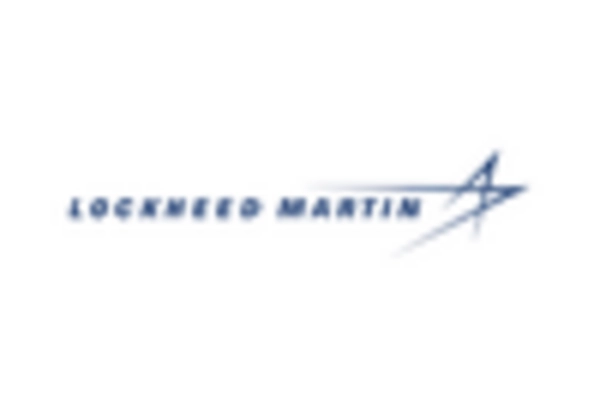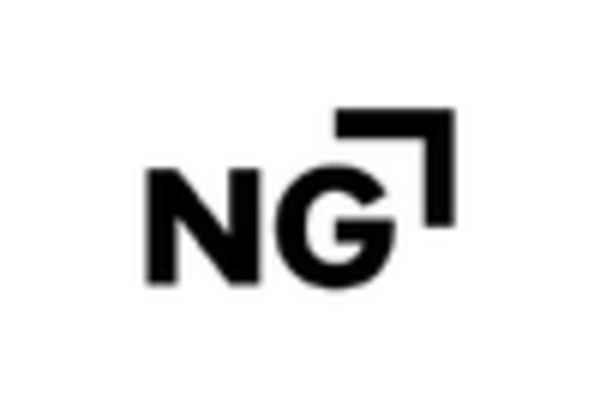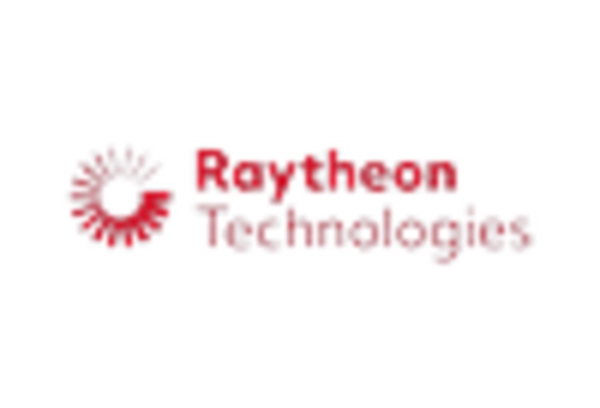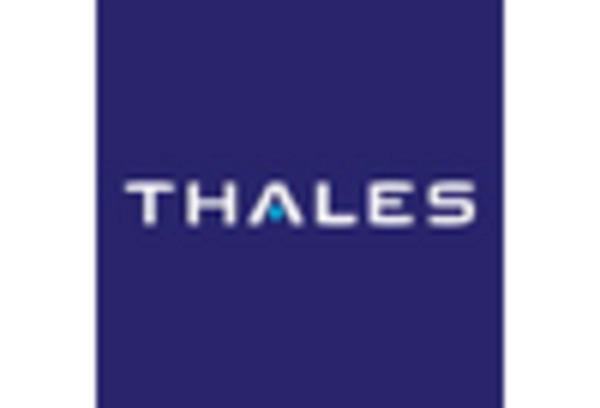Rising Geopolitical Tensions
Rising geopolitical tensions are significantly impacting the military data-links market. As nations face increasing threats and conflicts, there is a heightened demand for advanced communication systems that ensure secure and reliable data exchange. The military data-links market will likely experience growth as defense budgets expand in response to these tensions. The U.S. has increased its defense spending, with projections indicating a rise to $750 billion by 2026, which includes funding for advanced data-link technologies. This environment creates opportunities for innovation and development within the military data-links market, as nations seek to enhance their defense capabilities.
Emphasis on Cybersecurity Measures
The emphasis on cybersecurity measures is becoming a pivotal driver in the military data-links market. As military operations increasingly rely on digital communication, the need for secure data transmission has never been more critical. The U.S. military has recognized this necessity, investing heavily in cybersecurity initiatives to protect sensitive information. Recent reports suggest that cybersecurity spending in defense could reach $20 billion by 2026. This focus on cybersecurity not only safeguards military operations but also drives innovation in the military data-links market, as new technologies are developed to counter emerging threats.
Growing Focus on Network Resilience
The military data-links market is focusing on network resilience, driven by the need for robust communication systems in various operational environments. As military operations become increasingly complex, the demand for reliable data-links that can withstand disruptions is paramount. This resilience is crucial for maintaining situational awareness and operational effectiveness. The U.S. Department of Defense has allocated substantial budgets, estimated at over $700 billion annually, to enhance communication infrastructure, which includes investments in advanced data-link technologies. This emphasis on resilience not only supports current military operations but also prepares for future conflicts, thereby propelling growth in the military data-links market.
Integration of Artificial Intelligence
The integration of artificial intelligence (AI) into military data-links is emerging as a transformative driver in the market. AI technologies enhance data processing capabilities, enabling faster decision-making and improved situational awareness. The military data-links market is likely to benefit from AI applications that optimize data transmission and enhance cybersecurity measures. According to recent estimates, the AI in defense sector is projected to reach $20 billion by 2025, indicating a significant investment in technologies that support military operations. This integration not only streamlines communication but also enhances the overall effectiveness of military strategies, thereby fostering growth in the military data-links market.
Increased Investment in Modernization Programs
Increased investment in modernization programs is a critical driver for the military data-links market. The U.S. military is actively pursuing modernization initiatives to upgrade legacy systems and incorporate cutting-edge technologies. This trend is reflected in the Defense budget, which allocates approximately $100 billion annually for modernization efforts. These programs aim to enhance communication capabilities, improve interoperability, and ensure that military forces remain competitive. As a result, the military data-links market is poised for growth, as new systems are developed and existing ones are upgraded to meet contemporary operational demands.

















Leave a Comment